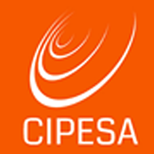By CIPESA Writer |
In January 2019, after nine years in the making, Nigeria signed into law the Discrimination Against Persons with Disabilities (Prohibition) Act, 2018. In Kenya, a similar framework had been signed into law in 2003. Both laws were aimed at promoting a more inclusive society for persons with disabilities.
Sections 24 and 25 of the Discrimination Against Persons with Disabilities (Prohibition) Act 2018 require the government to ensure that persons with disabilities are given special considerations, including provision of special communication emergencies.
On the other hand, Kenya’s constitution outlaws’ discrimination on the grounds of disability, under article 27(4). Under article 54, it emphasizes that a person with a disability shall be entitled to treatment with respect and dignity, access to educational institutions and facilities, reasonable access to all places, public transport and information, and access materials and devices including for communications. Additionally, Kenya’s National ICT Policy of 2016 outlines, under article 13, strategies for “an accessible ICT environment in the country in order to enable persons with disabilities to take full advantage of ICTs.”
However, despite these constitutional and other legal provisions, telecom operators in the two countries have largely failed to address the digital communication needs of persons with disabilities.
At least 7% of Nigeria’s (25 million people) and 3.5% of Kenya’s population (1.3 million people) are recognized by countries’ national census as persons with disabilities. Yet major operators – with the exception of Safaricom in Kenya – have failed to make their services accessible to a large section of this customer segment.
Section 15(1) of the Consumer Code of Practice Regulations 2007 issued by the Nigerian Communications Commission (NCC) requires telcos to ensure that the interests of consumers with disabilities are fully taken into account in developing and providing their services. However, leading telcos MTN Nigeria and Airtel Nigeria, which jointly have a 75% share of the telecom market share, have done little to fulfil this requirement.
In both countries, whereas the outlets of the telecom companies assessed were physically accessible to persons with disabilities, there was a stark lack of training for sales and customer services staff in serving persons with disabilities. In total, ten companies in five countries were assessed, including Safaricom and Wananchi Telecom (Kenya), Airtel Nigeria and MTN Nigeria, along with others in Botswana, South Africa, and Uganda. The assessment was guided by a tool that drew assessment criteria from the International Telecommunications Union (ITU) Model Accessibility Policy 2014, the Web and Mobile Content Accessibility Guidelines developed by the World Wide Web Consortium, and the Convention on the Rights of Persons with Disabilities (CRPD).
The telecom companies were assessed on various facets of promoting digital accessibility, such as availability of accessible handsets and other mobile devices embedded with accessibility features; physical accessibility of sales and customer service outlets of the telecom operators; and whether the operators trained their staff to serve customers with disabilities.
In Nigeria, despite its high population of persons with disabilities, the Joint National Association of Persons Living with Disabilities (JONAPWD) reported that there were barely any accessible and affordable devices offered for sale by telecom companies. Equally, the telecom companies had not made any efforts to offer accessible services.
In contrast, Safaricom in Kenya had put considerable effort in sensitivity training and upskilling its staff in the provision of services to persons with disabilities. Further, it created a database of its customers with visual impairment and once they call its customer service numbers, they are connected to customer care agents trained to cater to them.
In December 2017, Safaricom introduced the Interactive Voice Response (IVR) that enabled visually impaired customers to manage their M-Pesa transactions; and in November 2018, it launched the DOT Braille Watch, which displayed SMS notifications in braille, enabling the visually impaired to use M-Pesa services without having to seek assistance from third parties. Safaricom had also committed to employing more persons with disabilities and as of April 2019, it reported that 2.1% of its employees were persons with disabilities (up from 1.7% in 2018), with ambitions of reaching 5% in coming years.
Given the potential of Information and Communication Technologies (ICT) to make significant improvements in the lives of persons with disabilities, telecom operators need to address their concerns regarding the operators’ services and products. They should provide public information or communication in accessible formats such as Braille, large print, visual and audio formats; understand the numbers and needs of their customers with disabilities so that they build focused products and services to suit these customers; ramp up sensitivity training for staff, including in basic sign language; and improve availability for sale of affordable mobile telecommunication devices with accessible features.
Further, telecom companies should form partnerships with academia, civil society, disability rights organisations, tech developers and innovators as well as device manufacturers to develop accessible mobile communication solutions. Finally, operators in Kenya, Nigeria and elsewhere in Africa should look to Safaricom and Vodacom South Africa for learning examples on how to proactively and consistently work to improve digital accessibility and build partnerships that improve service provision to persons with disabilities.
See the full report here.

